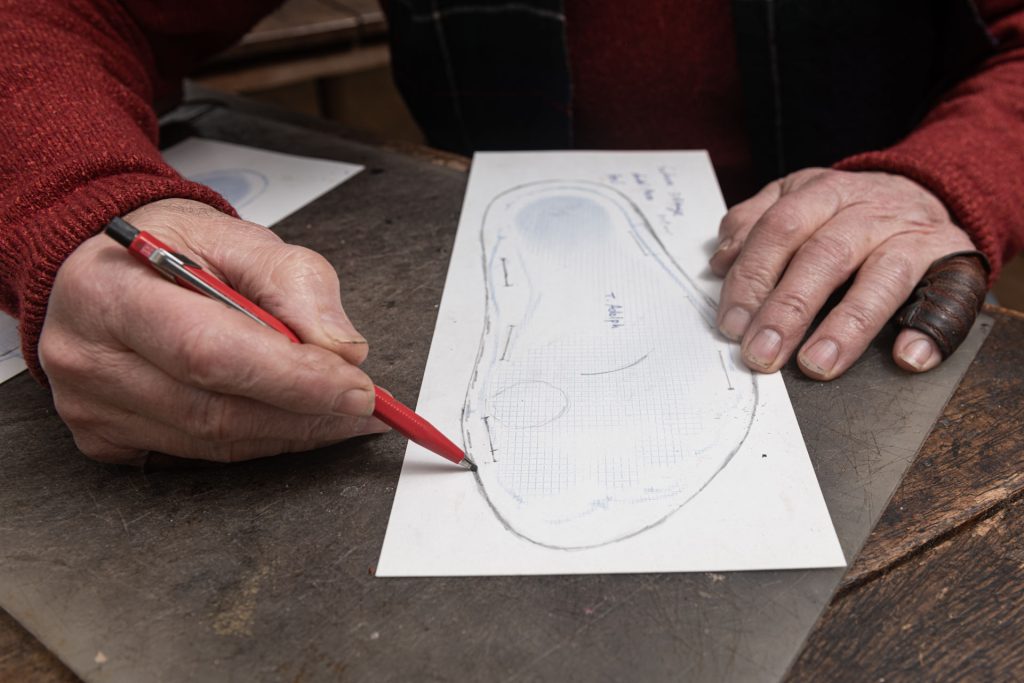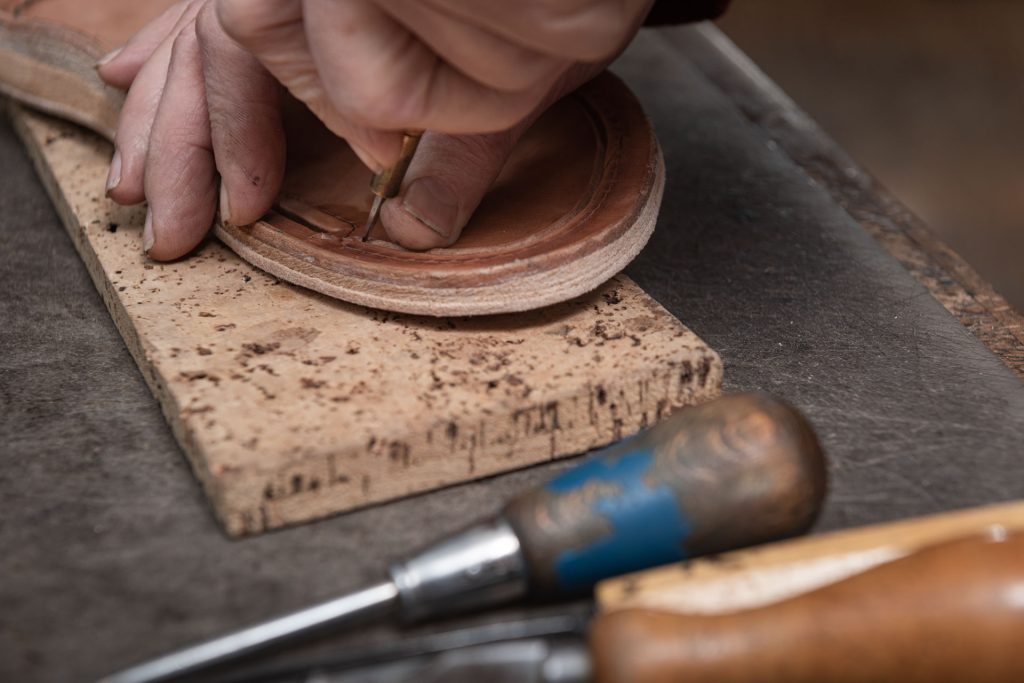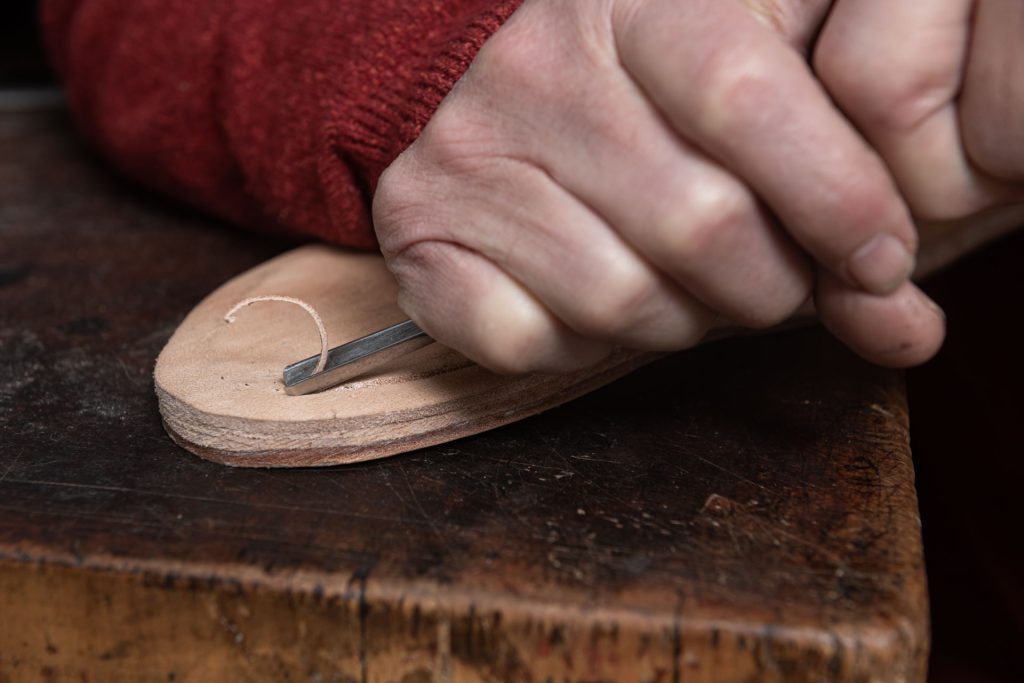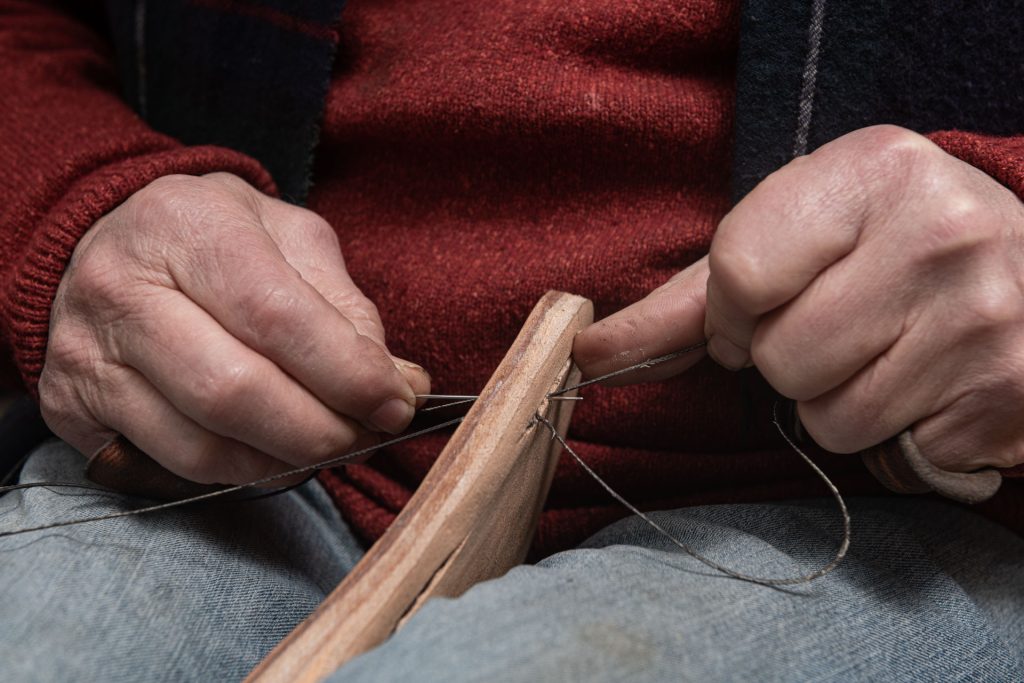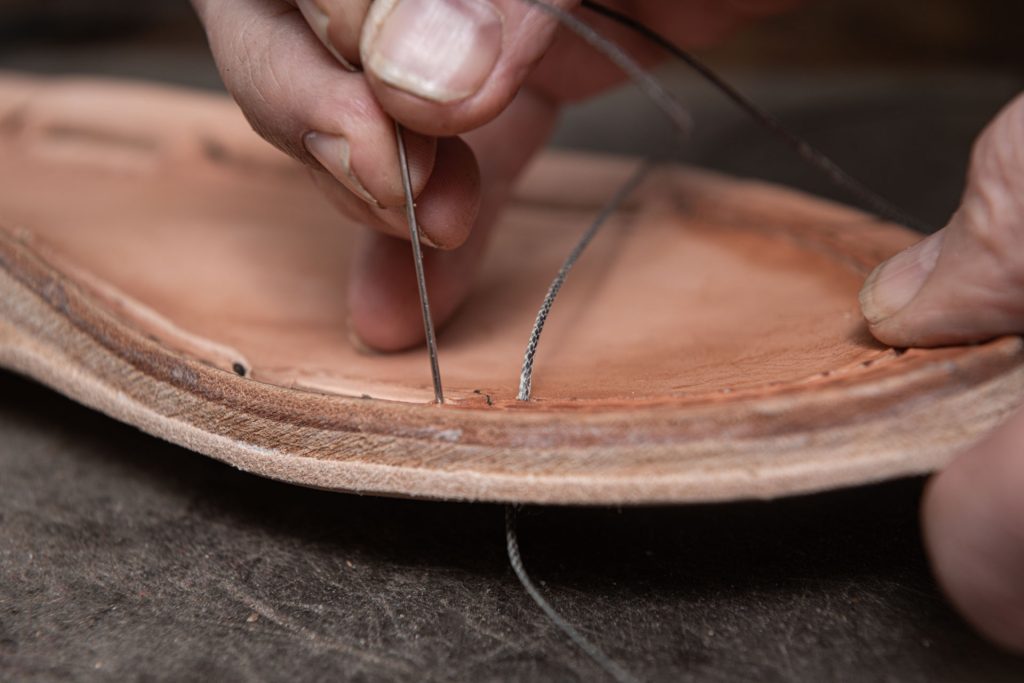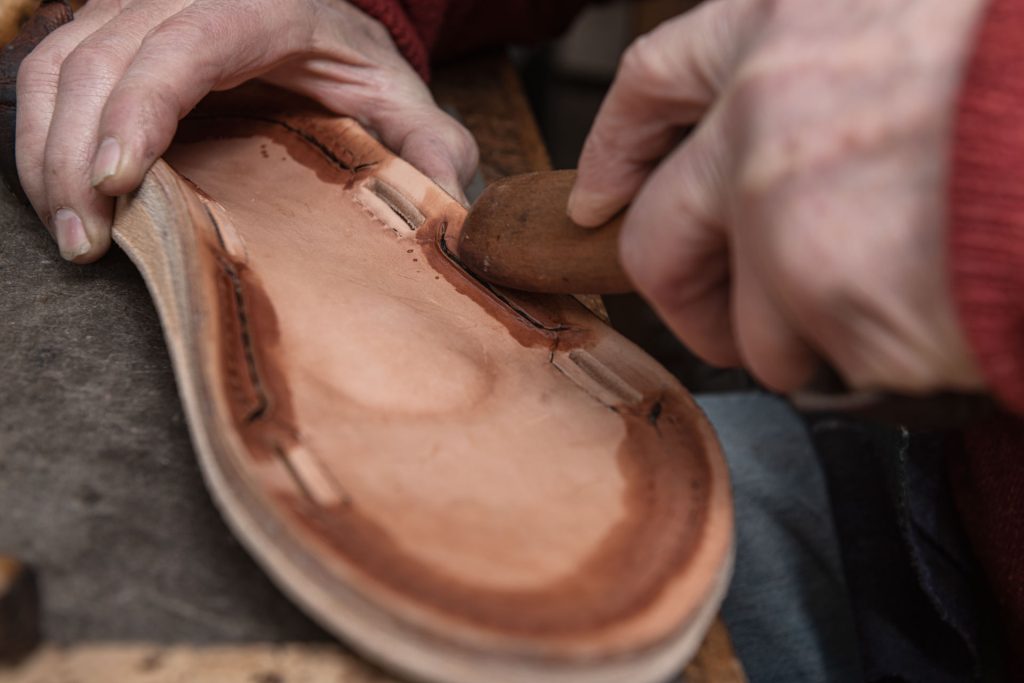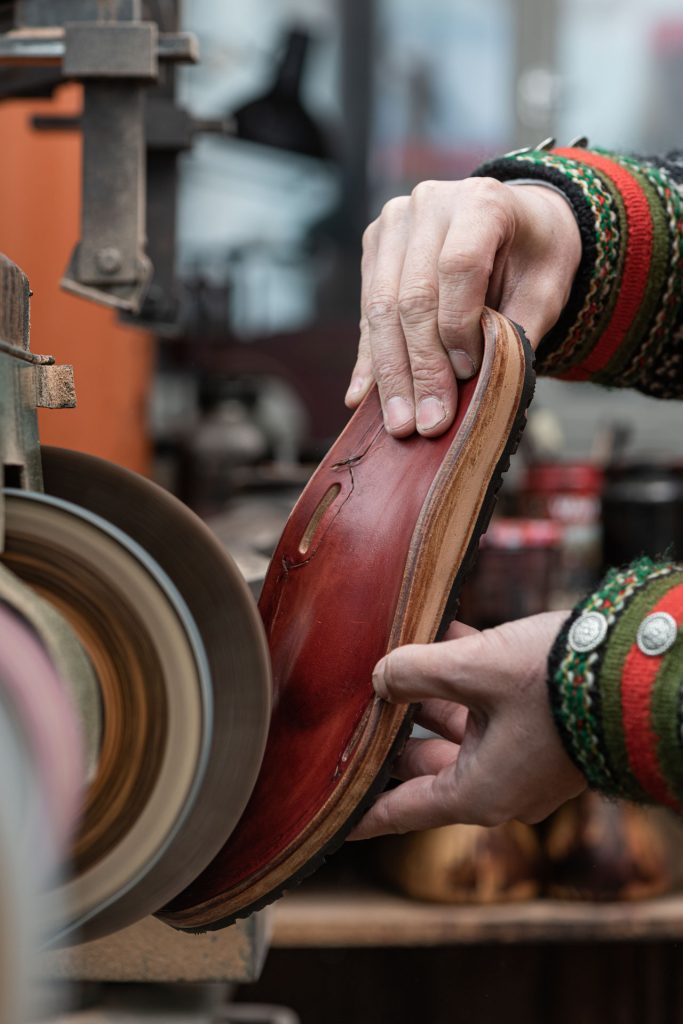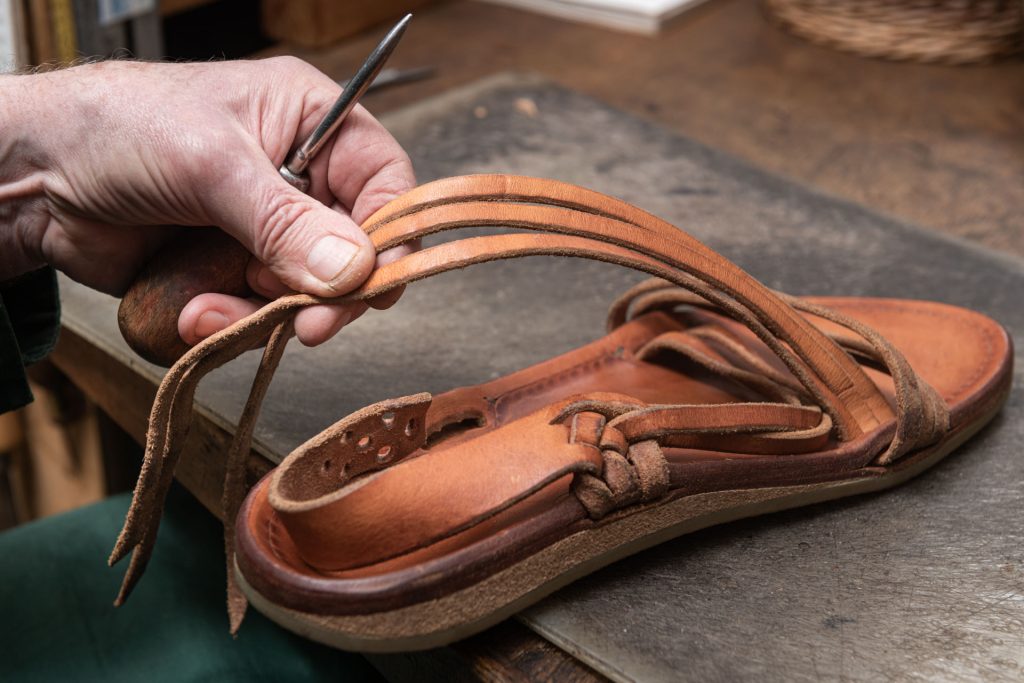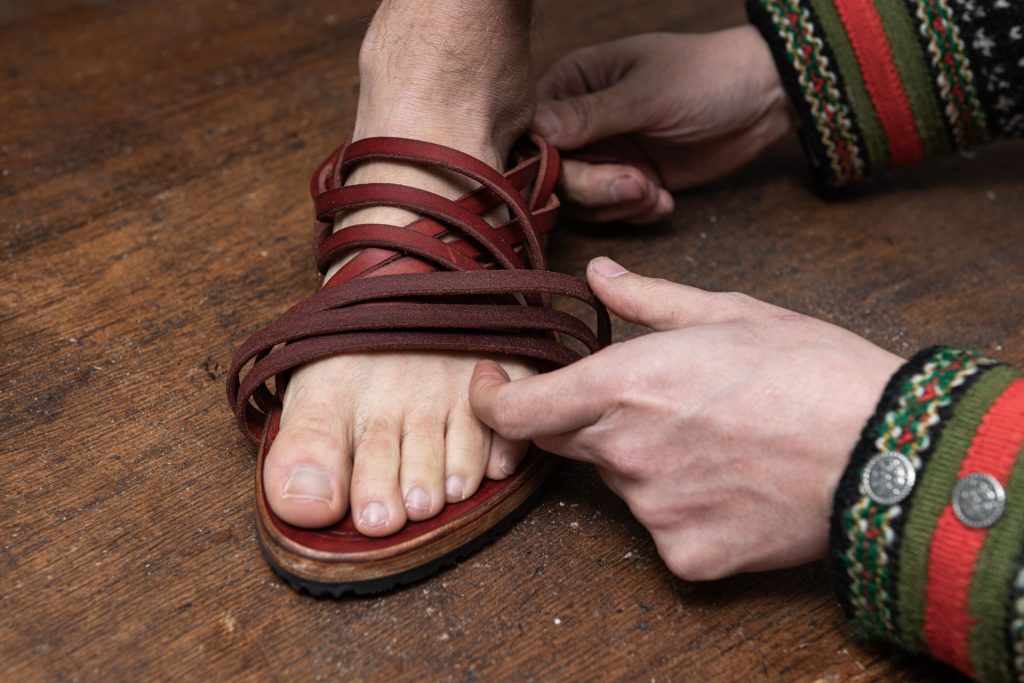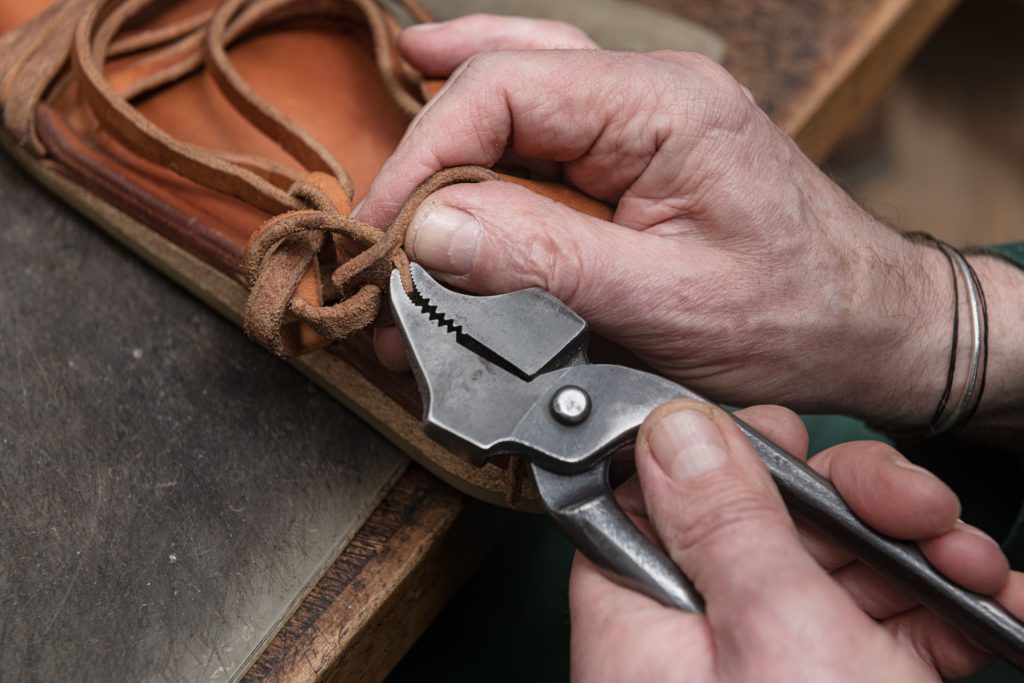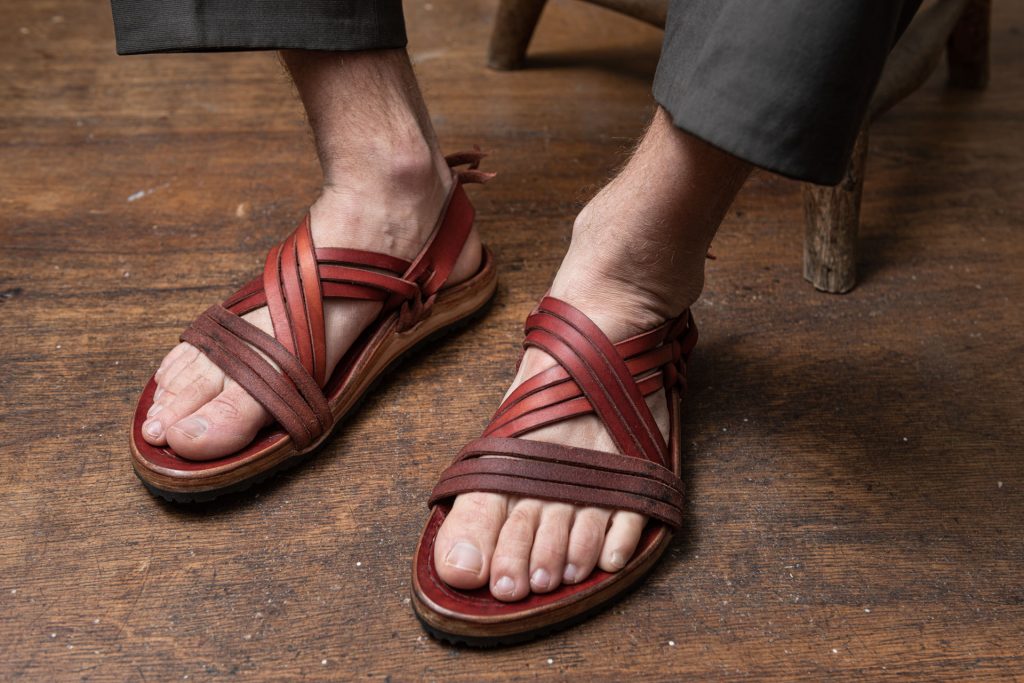It needs quite a few steps and several hours to turn good leather, cork and a durable outsole into a sandal. Our classic Mexico Handsewn is a good example. Some impressions from our workshop:
Everything starts with a pair of footprints: On the blueprint we draw the shape of the sandal and define the position of the pad – that’s the small support under the midfoot, and we mark where the straps will be attached to the sole some steps later. The most important criteria being: Everything has to be positioned to fit the foot anatomically as precisely as possible.
Work for the awl: When all the sole components have been glued together, a crack is created in the insole. In essence, that’s just a flat, sharp cut, in which the sewing thread will be completely sunk later. It’s a sword awl we use to pierce the holes for the seam in the next step, which takes a strong tool and also a strong hand.
On the underside, we then cut a groove along the pre-punched seam holes with a sharp groover. The thread is placed in the groove so that the outsole can be glued to a flat surface. In case the outsole needs to be renewed along with the glue, the old layers can be removed without damaging the thread.
A tight fit is essential. The thread is sewn with two needles pierced in opposite directions through the same hole. It gets tightened well again and again. If you could look through the leather, the thread would appear like kind of a chain, and in fact the seam is really tight.
No use to try the machine. It is the additional midsole that makes Mexico Handsewn particularly stable and puncture-resistant, but on the other hand the stiff and firm structure cannot be stitched even with our sturdy old machines. What this sole needs is solid handiwork. Every single stitch is carefully made. And there is a reward for all the effort: Mexico Handsewn is even more durable than our already quite sturdy other sandals.
After sewing, we close the crack in the insole. We soak the crack with some water so that the leather becomes a little bit pliable and swells, and press the crack closed with a smoothing tool. It will remain closed after drying, only a very narrow joint remains. And there is a most welcome side effect: The thread is no longer visible.
The finished sole consists of several components. From top to bottom: Insole, split leather frame, the usual midsole, the cork footbed, then the additional midsole as the trademark feature of Mexico Handsewn and finally the outsole. A firm pad is placed in the midfoot area. On the grinding and polishing machine, the edge is now finely ground into the contour and then polished with wax.
The next step: Fitting the straps. The straps are pulled through the punched holes in the characteristic Mexico cross lacing. We help a little with the awl, since the straps sit really tight in the sole, especially in a new sandal – that’s exactly how it should be.
The straps are still quite loose. Not until the sandals are fitted to the foot they are pulled exactly to the necessary length, section by section. The straps should be snug, but not pinch the foot. After breaking in the sandals, they may need to be readjusted a bit.
Finally, it’s time for the heel strap. The three straps are braided in the somewhat wider heel strap. The connection is simple but tight and functional, and it does not require buckles and clasps at all. Any kind of buckle would need some sort of elaborate fixing, even then would still be the weakest part of the whole sandal. An completely out of place, to our taste. You can adjust the heel strap with just a few moves, making it tighter or a little more loose. This is what we call our “Mexican Joint”.
You can actually see it’s good work. If everything looks just right, it’s fine with us. Have you ever noticed that off-the-rack sandals often have the little toe pinched? Because the straps are simply not in the right place? With us, that won’t happen! Whether your foot is narrow or rather wide, long or short, the shape of the sole will fit perfectly and the straps will be in the best possible place. Made to measure, no doubt!
